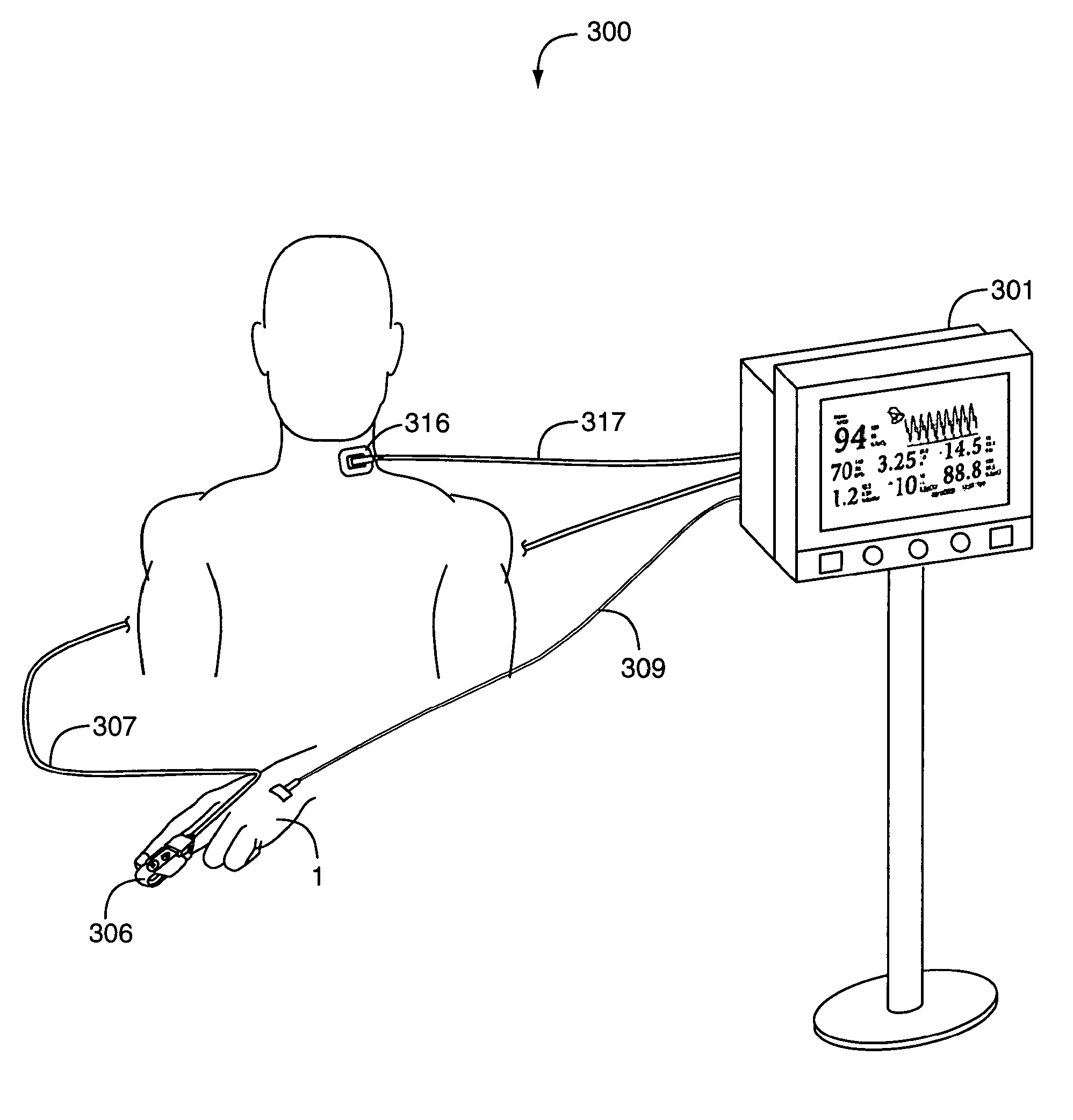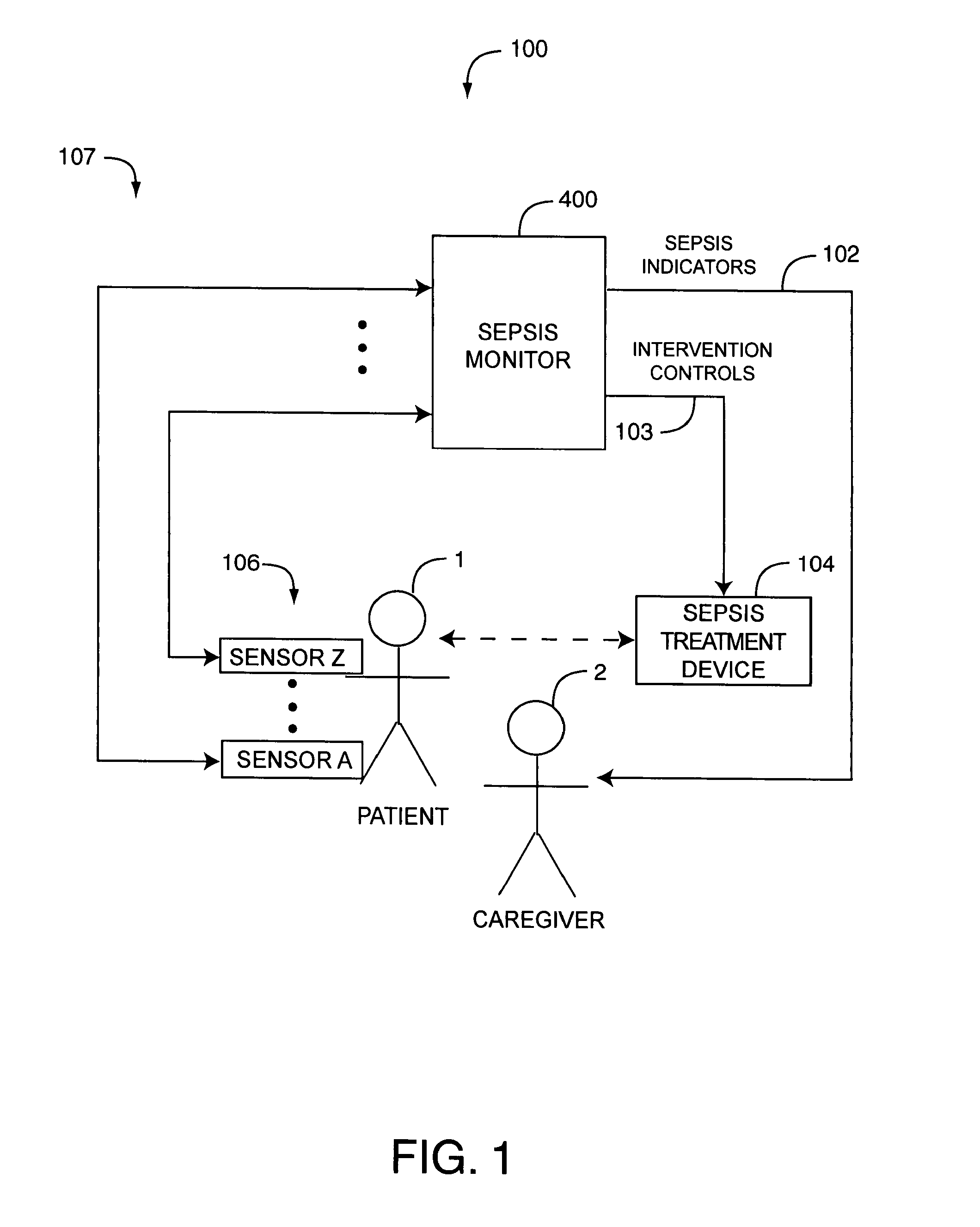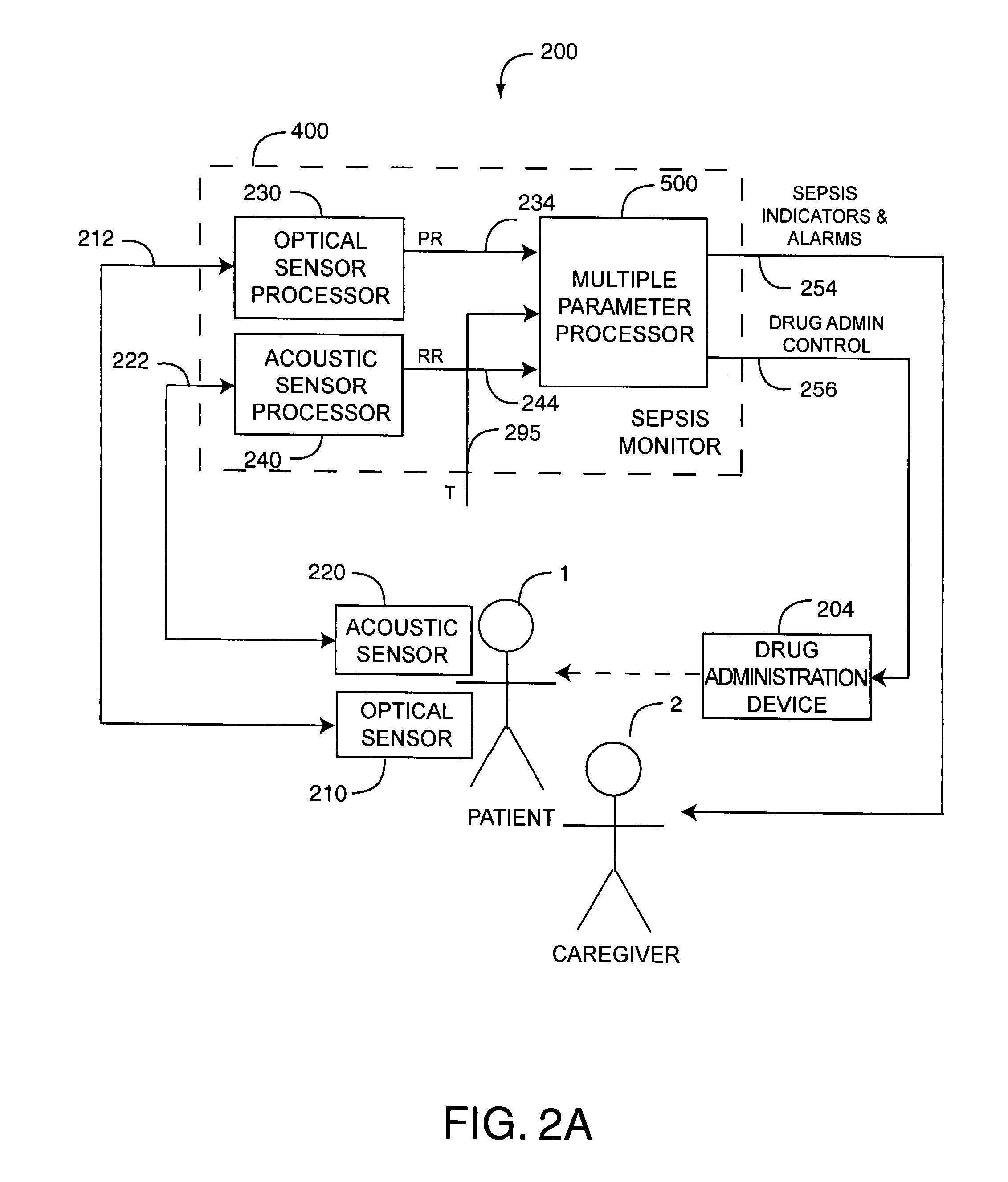Sepsis monitor
a monitor and sepsis technology, applied in the field of sepsis monitors, can solve the problems of insufficient advance warning of deteriorating patient health, low survival rate of severe sepsis, lack of current patient identification strategies, etc., and achieve the effect of low survival ra
- Summary
- Abstract
- Description
- Claims
- Application Information
AI Technical Summary
Benefits of technology
Problems solved by technology
Method used
Image
Examples
embodiment 200
[0021]FIGS. 2A-B illustrate sepsis monitoring system embodiments 200, 205. As shown in FIG. 2A with respect to a system embodiment 200, a sepsis monitor 400 is in communications with an optical sensor 210 and an acoustic sensor 220 attached to a patient 1. An optical sensor processor 230 generates pulsatile-blood related parameters, such as pulse rate (PR) 234, in response to optical sensor signals 212. An acoustic sensor processor 240 generates body-sound related parameters 244, such as respiration rate (RR), in response to acoustic sensor signals 222. A temperature parameter 295 is generated via a temperature sensor or manually entered. A multiple parameter processor 500 processes the parameter measurements 234, 244, 295 alone or in combination and generates sepsis indicators and alarms 254 or drug administration controls 256, or both, in response. An acoustic sensor is described in U.S. Pat. No. 6,661,161 entitled Piezoelectric Biological Sound Monitor with Printed Circuit Board ...
embodiment 205
[0022]As shown in FIG. 2B with respect to a system embodiment 205, a sepsis monitor 400 is in communications with an optical sensor 210 and a NIBP sensor 260 attached to a patient 1. An optical sensor processor 230 generates pulsatile-blood related parameters, such as such as HbCO 236 and HbMet 238 in response to optical sensor signals 212. An NIPB processor 270 generates blood pressure (BP) parameters, in response to NIBP sensor signals 262. A multiple parameter processor 500 processes the parameter measurements 236, 238, 274 alone or in combination and generates sepsis indicators and alarms 254 or drug administration controls 256, or both, in response. A continuous NIBP(CNIBP) sensor and processor are described in U.S. Pat. No. 5,590,649 entitled Apparatus and Method for Measuring an Induced Perturbation to Determine Blood Pressure and an intelligent cuff inflation (ICI) sensor and processor are described in U.S. Pat. No. 5,785,659 entitled Automatically Activated Blood Pressure M...
embodiment 400
[0030]FIG. 4 illustrates a sepsis monitor embodiment 400 having sensor signal processor(s) 401, a multiple parameter processor 500, sensor signal inputs 410 to the signal processor(s) 401 and monitor outputs 430 from the parameter processor 500. Monitor outputs 430 may be sepsis alarms, wellness indicators, controls and sepsis diagnostics. Alarms may be used to alert medical personnel to a potential urgent or emergency medical condition in a patient under their care. Wellness indicators may be used to inform medical personnel as to patient condition stability or instability, such as a less urgent but potentially deteriorating medical state or condition. Diagnostics may be messages or other indicators used to assist medical personnel in diagnosing or treating a patient condition. Controls may be used to affect the operation of a medical treatment device, as described above, or other medical-related equipment.
[0031]In an embodiment, the multiple parameter processor 500 also has an inp...
PUM
 Login to View More
Login to View More Abstract
Description
Claims
Application Information
 Login to View More
Login to View More - R&D
- Intellectual Property
- Life Sciences
- Materials
- Tech Scout
- Unparalleled Data Quality
- Higher Quality Content
- 60% Fewer Hallucinations
Browse by: Latest US Patents, China's latest patents, Technical Efficacy Thesaurus, Application Domain, Technology Topic, Popular Technical Reports.
© 2025 PatSnap. All rights reserved.Legal|Privacy policy|Modern Slavery Act Transparency Statement|Sitemap|About US| Contact US: help@patsnap.com



